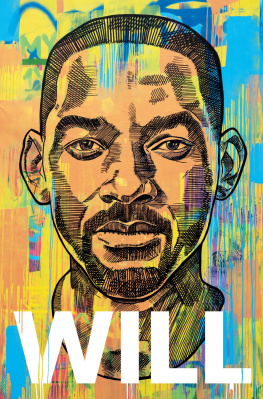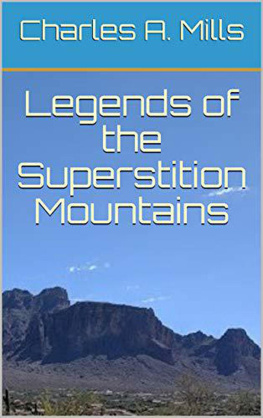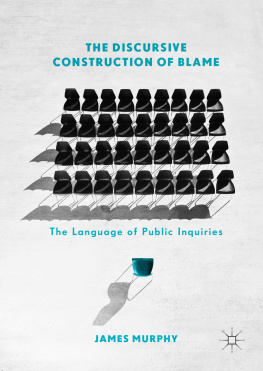Contents
Guide
Pagebreaks of the print version
CULTURE, PLACE, AND NATURE
Studies in Anthropology and Environment
K. Sivaramakrishnan, Series Editor
Centered in anthropology, the Culture, Place, and Nature series encompasses new interdisciplinary social science research on environmental issues, focusing on the intersection of culture, ecology, and politics in global, national, and local contexts. Contributors to the series view environmental knowledge and issues from the multiple and often conflicting perspectives of various cultural systems.
Mountains of Blame
CLIMATE AND CULPABILITY IN THE PHILIPPINE UPLANDS
Will Smith
UNIVERSITY OF WASHINGTON PRESS
Seattle
Mountains of Blamewas made possible in part by grants from the Samuel and Althea Stroum Endowed Book Fund, the Australian Academy of the Humanities, and the Alfred Deakin Institute at Deakin University.
Copyright 2020 by the University of Washington Press
Composed in Warnock Pro, typeface designed by Robert Slimbach
Cover design by Katrina Noble
Cover photograph: Barangay Tagabinet, Palawan, Philippines, 2017. Photograph by Jason Houston for USAID.
Interior map and photographs are by the author.
242322212054321
Printed and bound in the United States of America
All rights reserved. No part of this publication may be reproduced or transmitted in any form or by any means, electronic or mechanical, including photocopy, recording, or any information storage or retrieval system, without permission in writing from the publisher.
UNIVERSITY OF WASHINGTON PRESS
uwapress.uw.edu
LIBRARY OF CONGRESS CATALOGING-IN-PUBLICATION DATA
LC record available at https://lccn.loc.gov/2020020429
LC ebook record available at https://lccn.loc.gov/2020020430
ISBN 978-0-295-74815-3 (hardcover), ISBN 978-0-295-74816-0 (paperback), ISBN 978-0-295-74817-7 (ebook)
Portions of was previously published as Weather from Incest: The Politics of Indigenous Climate Change Knowledge on Palawan Island, the Philippines, Australian Journal of Anthropology( 2018), reprinted by permission of John Wiley and Sons.
The paper used in this publication is acid free and meets the minimum requirements of American National Standard for Information SciencesPermanence of Paper for Printed Library Materials, ANSI Z39.481984 .
CONTENTS
FOREWORD
The literature on climate change emerging from sociocultural anthropology has begun to move beyond tired debates on mitigation and adaptation, coping with disasters, and the creation of climate refugees who are displaced and driven from homes and livelihoods. Along the way it has become increasingly nuanced in considering historical, moral, and politically inequitable processes through which climate disruption is experienced, explained, and countered. In this vein, Will Smith has produced a study that is attentive to longer histories of indigenous people in the forested uplands of Palawan Island, a part of Mindanao in the Philippines. The region and its residents are no strangers to the climate variations produced by El Ni o currents and the storms that beset the South China Sea. But in the last few decades, they have observed new weather patterns that are perceived as linked to the social transformation they have undergone in reorganizing their agriculture and immediate relations to plants, soil, and society.
With empathy and care, Smith examines the self-awareness and critical evaluations of their own actions and responses by the indigenous people of Palawan. The injustice of the way in which native people have borne the brunt of climate changerelated disastersand before that, the rapacity of extractive industries in their territorieshas generated studies critiquing such ravages in emic indigenous terms (see, e.g., Povinelli, 2016; De la Cadena, 2015), even as they analyze the limitations of liberal social theory in synthetic, often sweeping, arcs (e.g., Tsing, 2017; and a proliferating literature on the Anthropocene). Smith moves beyond analyses that fail to differentiate between experiences of environmental risk and disruption across societies and their particular histories. Such histories, while learning to be more attentive to the place and role of nonhumans, remain distinguishable by local cultural processes and world-connecting forces that emerge from human action and sensibility.
In that respect, this work is more akin to that of Tania Li (2014) and Karine Gagn (2019) in its patient and respectful attention to the way local perspectives on larger environmental forces and economic processes are dynamic, steeped in self-appraisal, and generative of commentary on both wider conditions and personal foibles as a product of the changes that have enmeshed human lives.











